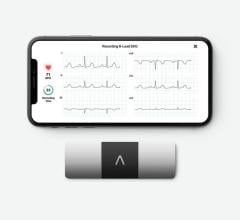August 7, 2007 - Researchers found that a pulse-based system for screening older patients for atrial fibrillation to reduce risk of stroke is an effective approach.
In a study led by F.D. Richard Hobbs, M.B., Ch.B., of the University of Birmingham, UK, a team of researchers found that "opportunistic" screening by an irregular pulse, followed by electrocardiography (ECG), if needed, was as effective as systematic population screening and more sensitive than non-systematic case finding.
"This finding suggests that routine electrocardiography within this population is unnecessary for the detection of atrial fibrillation as long as healthcare professionals are conscientious about feeling the pulse," F.D. Richard Hobbs, M.B., Ch.B., of the University of Birmingham, and colleagues, reported in BMJ Online First.
The two screening strategies were similar in detecting atrial fibrillation and both were almost 60% better than non-systematic case finding.
The trial was conducted at 50 primary care centers in England, included 14,802 patients, 65 or older and screening took place over 12 months from October 2001 to February 2003.
The detection rate of new cases of atrial fibrillation was 1.63 percent annually in both intervention practices and 1.04 percent in control practices. Systematic and opportunistic screening by pulse-taking detected similar numbers of new cases - 1.62 percent and 1.64 percent.
In the opportunistic screening group, there were 75 new cases of atrial fibrillation and 74 new cases in the systematic screening group.
For more information: www.bmj.com


 November 21, 2023
November 21, 2023 








